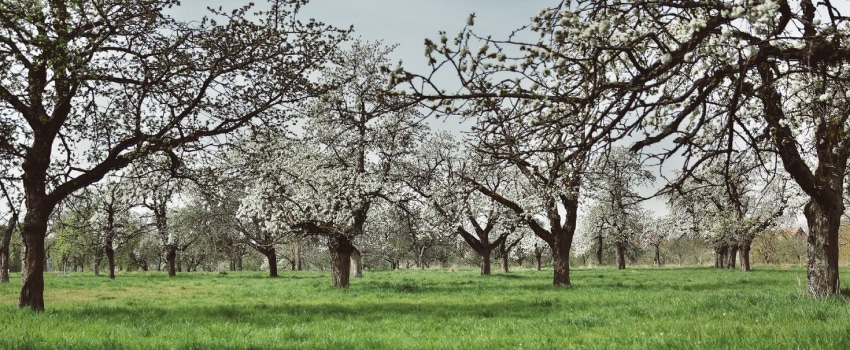
The National Trust has been carrying out research into the decline of an iconic scene within rural England; that of the orchard.
According to the trust, since 1900 we have lost more than half of England and Wales’ orchards which is equivalent in size to the Isle of Wight.
Impacts wildlife
This disappearance of our orchards is having a big impact on our flora and fauna. The main reason for the loss is they are scrapped to make way for housing or other forms of farming.
The greatest loss is in the South West of England. Urban expansion has been a big contributor to the change. Orchards that once existed on the edges of towns and cities have been developed as part of urban sprawl.
Synonymous with springtime
The beauty of springtime blossom on rows and rows of fruit trees is something that many of us associate with parts of the UK and is a special moment in the year as a marker for spring being in bloom.
However, orchards provide more than just beautiful blossom in spring and fruit in late summer / early autumn. Orchards also support a diverse range of wildlife such as flies, bees, bats and birds. In addition to bees the blossom is a food source for all sorts of pollinating insects.
Over 50% decline
According the National Trusts report modern orchards have declined by 56% in England and Wales whereas traditional orchards have seen an even greater decline. Interestingly there are three counties; Kent, East Sussex and Suffolk that have seen a rise in orchards due to modern planting. However their increase is against the overall trend of orchard loss.
The National Trust has vowed to plant four million blossoming trees as part of its commitment to plant and establish 20 million trees across England, Wales and Northern Ireland by 2030.
If you would like to find out more about supporting the National Trust then please visit our National Trust page.





